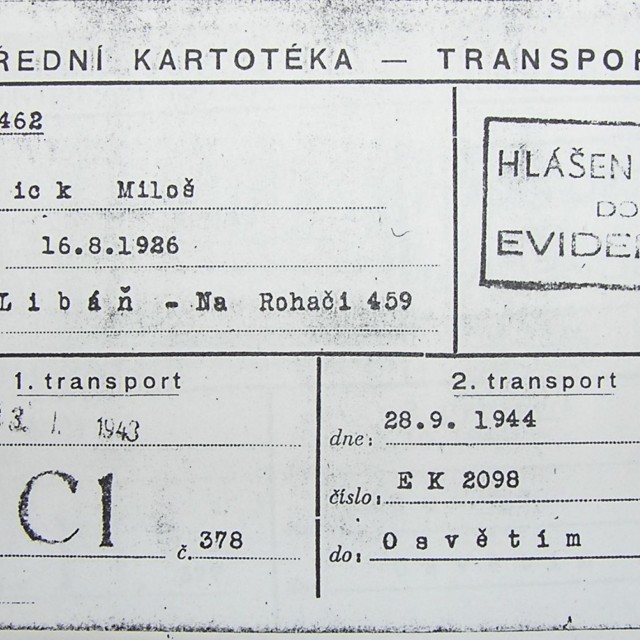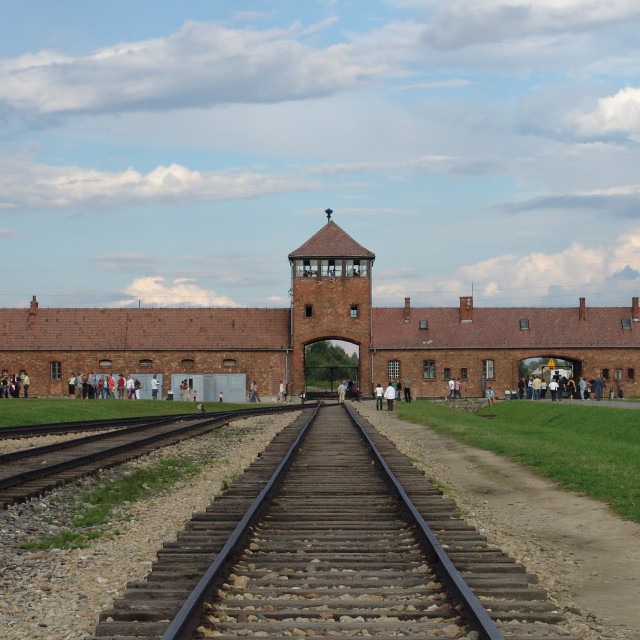Mengele looked at me with derision
In September 1944, Miloš Pick was assigned to the transport leaving Terezín for Auschwitz. It took the transport, made up of cattle wagons, three days and three nights to get to the East. When the wagons reached their destination, Pick and his companions knew that the situation was bad. “On the third day, sometime at four or five a.m., we noticed kilometres of barbed wire and watchtowers with machine guns and searchlights. Then it all started. Even the little we had on us, a backpack, we had to leave behind in the wagon. A so called Kanada Kommando forced us out. They made us line up in a column of fives, SS-men were firing warning shots from their machineguns, they were holding their German shepherds on chain leashes. They made us line up in front of a table with a spotlight, where Mengele was sitting among SS guards.” The transport was about to experience its first selection. At that moment a certain Gert Körbl, who was the leader of Hechaluc - an illegal leftist youth group - in Terezín, played an important role in the life of Miloš Pick. He managed to find out, what was going on: He pushed himself to the front rows of the procession where people had to step forward to face Mengele, and he warned each group of fives: ‘Miloš, everyone under 16 or above 50 goes into the gas chamber, but some transports are already being assigned to work in the arms industry. Report that you’re at least 18 and that you’re a heavy industry worker.’” Pick took this piece of advice seriously: “When it was my turn, I gathered all the strength and energy in me. I tried to look into Mengele’s eyes cheekily and shouted: 'Zwanzig Jahre, Maschinenschlosser!' I was 18 and I was in no way a Maschinenschlosser, and in my pocket, I had my Protectorate identity card saying that I was a student. All I had to do, was reach for it. Mengele looked at me with derision – everyone tried to lie like that – but then he turned away. There was a sparkle of amusement in his eyes and the baton that was about to move to the wrong side stopped suddenly and swung to the other side. SS-men made a gap and I could join the column of fives on the good side. That’s where I felt like vomiting. There, I realized that I was just a few centimetres away from it all going wrong.”
Hodnocení
Hodnotilo 0 lidí
Routes
Not a part of any route.
Comments
No comments yet.













